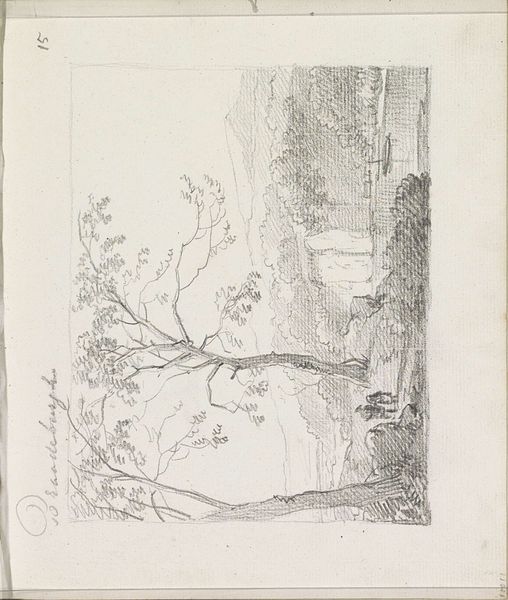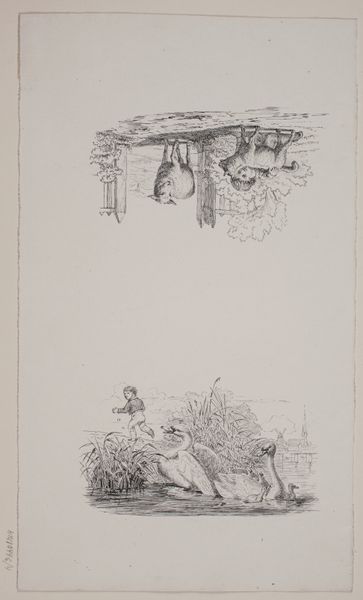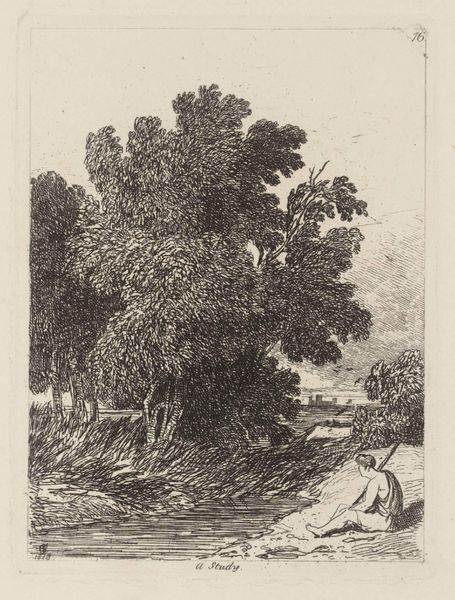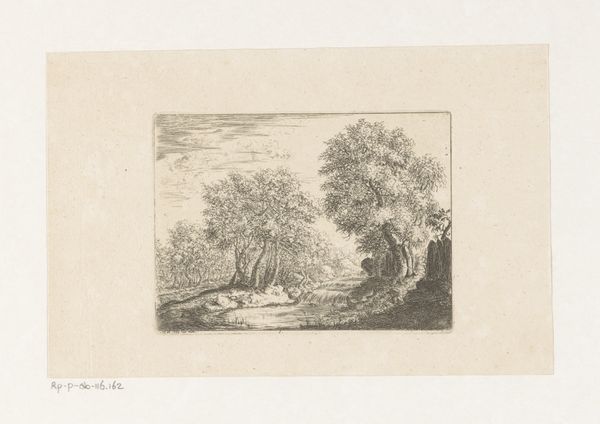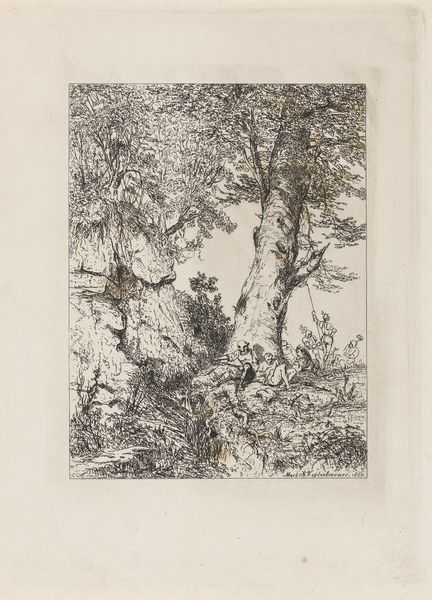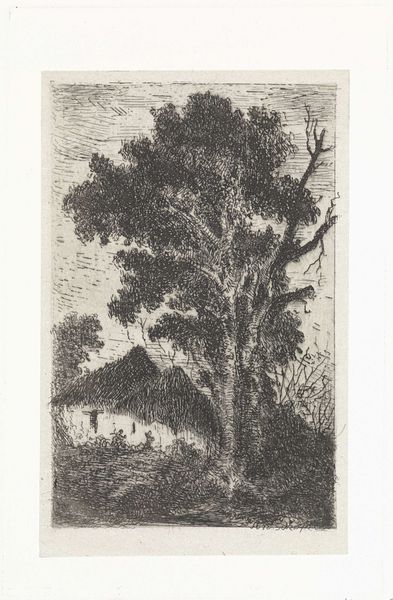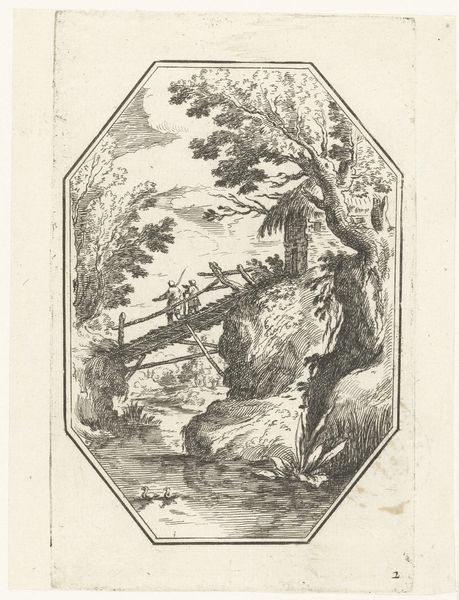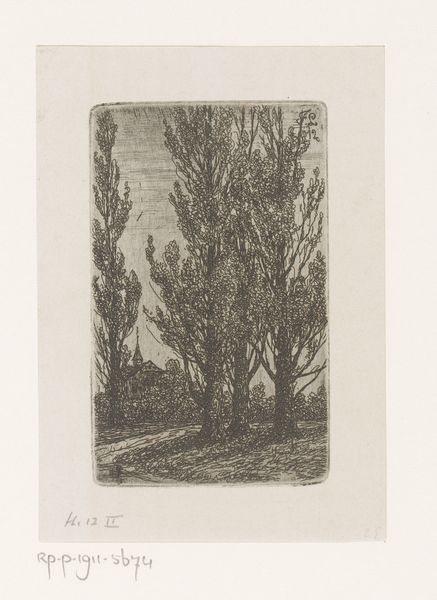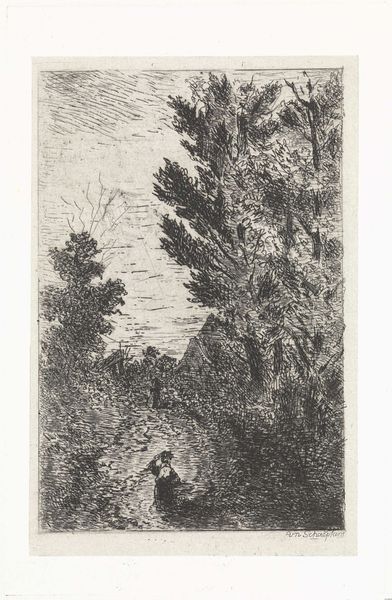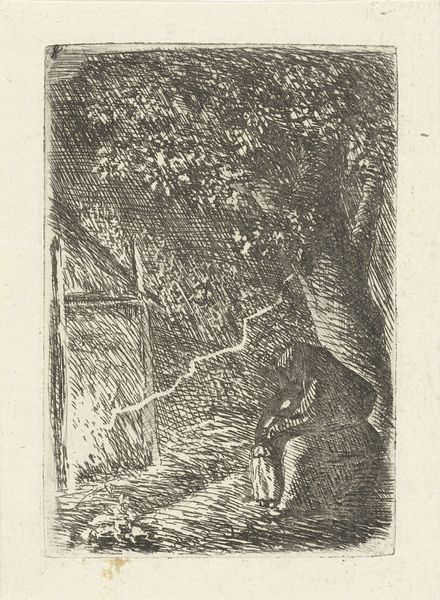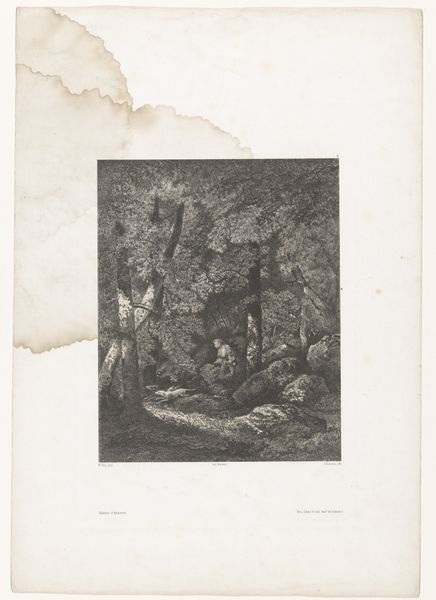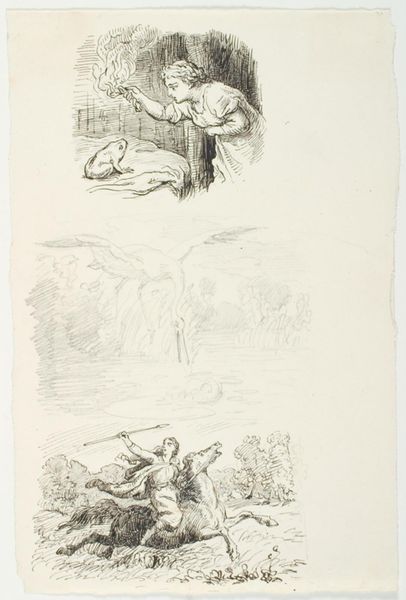
To illustrationsudkast til H.C. Andersen, Hurtigløberne 1866
0:00
0:00
drawing, ink
#
drawing
#
landscape
#
etching
#
ink
Dimensions: 154 mm (height) x 103 mm (width) (bladmaal)
Editor: This is "To illustrationsudkast til H.C. Andersen, Hurtigløberne," a pen and ink drawing by Lorenz Frølich from 1866, currently at the SMK in Copenhagen. I'm immediately drawn to how sketchy and preliminary it feels, yet there’s a real sense of place conveyed through the landscape. What strikes you when you look at it? Curator: What grabs my attention is how these sketches embody a specific historical moment—the mid-19th century and the rise of national romanticism. Consider how Frølich, creating illustrations for Hans Christian Andersen, tapped into an interest of the period for folklore. These glimpses of rural life become emblematic of Danish identity. Think about who had access to idyllic images of the countryside in 1866 versus the realities of peasant life, industrialisation, and the disenfranchisement of rural people from common lands. Who *are* these "fast runners," and from which segment of society do they come? Editor: That's a side I hadn't really considered. I was focusing on the simple composition. The light seems to penetrate the leaves; you can see how he built up the scene. It makes it seem dreamlike and welcoming, despite the very evident work put into the etching! Curator: Precisely! But that “dreamlike” quality is crucial. Are these romanticised, deliberately curated images being deployed as a distraction from social realities? Are we being presented with an imagined past, designed to solidify a particular vision of national identity rooted in class, and gender dynamics? Who has access to these spaces? What do those fences symbolize, socially, politically? Are they welcoming or restrictive, inviting or exclusionary? Editor: I see what you mean. Looking at it that way adds a whole other layer to what initially seemed like a straightforward landscape study. Curator: Absolutely. Art, even seemingly simple illustrations, is never neutral. It always operates within, and often reinforces, complex power structures. By questioning its construction and intended audience, we can understand how it contributes to those systems. Editor: That's so true! Thanks to you, I’ll always have in the back of my mind who has access and what statements are these sketches echoing from that moment in time.
Comments
No comments
Be the first to comment and join the conversation on the ultimate creative platform.
